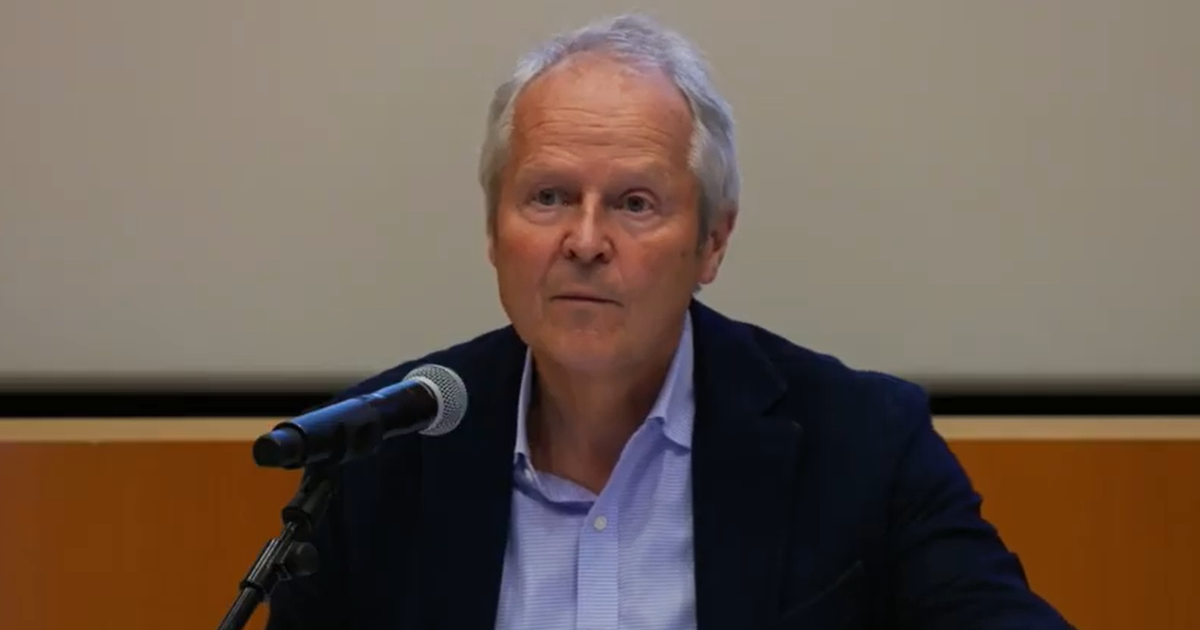That classic result was a way to transform any algorithm with a given time budget into a new algorithm with a slightly smaller space budget. Williams saw that a simulation based on squishy pebbles would make the new algorithm’s space usage much smaller—roughly equal to the square root of the original algorithm’s time budget. That new space-efficient algorithm would also be much slower, so the simulation was not likely to have practical applications. But from a theoretical point of view, it was nothing short of revolutionary.
For 50 years, researchers had assumed it was impossible to improve Hopcroft, Paul and Valiant’s universal simulation. Williams’ idea—if it worked—wouldn’t just beat their record—it would demolish it.
“I thought about it, and I was like, ‘Well, that just simply can’t be true,’” Williams said. He set it aside and didn’t come back to it until that fateful day in July, when he tried to find the flaw in the argument and failed. After he realized that there was no flaw, he spent months writing and rewriting the proof to make it as clear as possible.
At the end of February, Williams finally put the finished paper online. Cook and Mertz were as surprised as everyone else. “I had to go take a long walk before doing anything else,” Mertz said.
Valiant got a sneak preview of Williams’ improvement on his decades-old result during his morning commute. For years, he’s taught at Harvard University, just down the road from Williams’ office at MIT. They’d met before, but they didn’t know they lived in the same neighborhood until they bumped into each other on the bus on a snowy February day, a few weeks before the result was public. Williams described his proof to the startled Valiant and promised to send along his paper.
“I was very, very impressed,” Valiant said. “If you get any mathematical result which is the best thing in 50 years, you must be doing something right.”
PSPACE: The Final Frontier
With his new simulation, Williams had proved a positive result about the computational power of space: Algorithms that use relatively little space can solve all problems that require a somewhat larger amount of time. Then, using just a few lines of math, he flipped that around and proved a negative result about the computational power of time: At least a few problems can’t be solved unless you use more time than space. That second, narrower result is in line with what researchers expected. The weird part is how Williams got there, by first proving a result that applies to all algorithms, no matter what problems they solve.
“I still have a hard time believing it,” Williams said. “It just seems too good to be true.”
Williams used Cook and Mertz’s technique to establish a stronger link between space and time—the first progress on that problem in 50 years.Photograph: Katherine Taylor for Quanta Magazine
Phrased in qualitative terms, Williams’ second result may sound like the long-sought solution to the P versus PSPACE problem. The difference is a matter of scale. P and PSPACE are very broad complexity classes, while Williams’ results work at a finer level. He established a quantitative gap between the power of space and the power of time, and to prove that PSPACE is larger than P, researchers will have to make that gap much, much wider.
That’s a daunting challenge, akin to prying apart a sidewalk crack with a crowbar until it’s as wide as the Grand Canyon. But it might be possible to get there by using a modified version of Williams’ simulation procedure that repeats the key step many times, saving a bit of space each time. It’s like a way to repeatedly ratchet up the length of your crowbar—make it big enough, and you can pry open anything. That repeated improvement doesn’t work with the current version of the algorithm, but researchers don’t know whether that’s a fundamental limitation.
“It could be an ultimate bottleneck, or it could be a 50-year bottleneck,” Valiant said. “Or it could be something which maybe someone can solve next week.”
If the problem is solved next week, Williams will be kicking himself. Before he wrote the paper, he spent months trying and failing to extend his result. But even if such an extension is not possible, Williams is confident that more space exploration is bound to lead somewhere interesting—perhaps progress on an entirely different problem.
“I can never prove precisely the things that I want to prove,” he said. “But often, the thing I prove is way better than what I wanted.”
Editor’s note: Scott Aaronson is a member of Quanta Magazine’s advisory board.
Original story reprinted with permission from Quanta Magazine, an editorially independent publication of the Simons Foundation whose mission is to enhance public understanding of science by covering research developments and trends in mathematics and the physical and life sciences.



